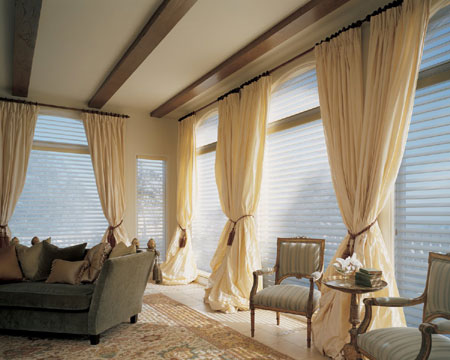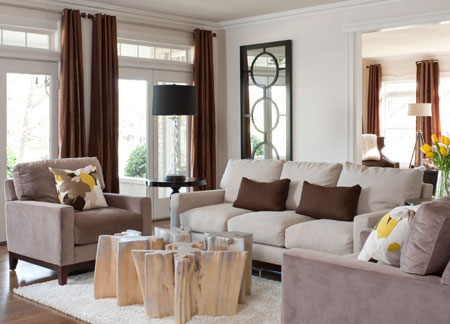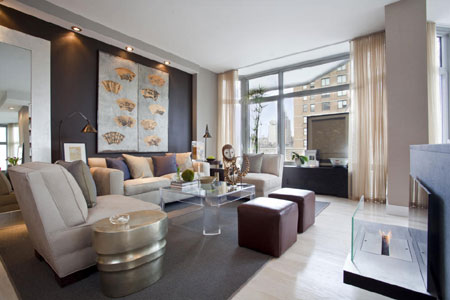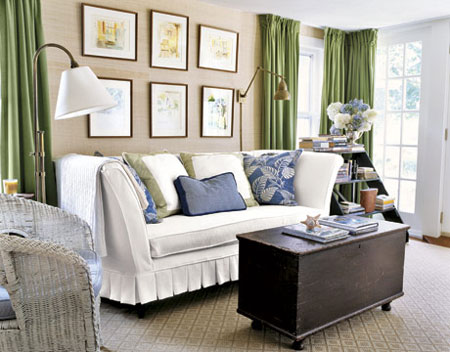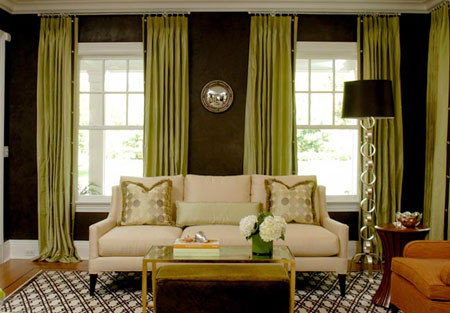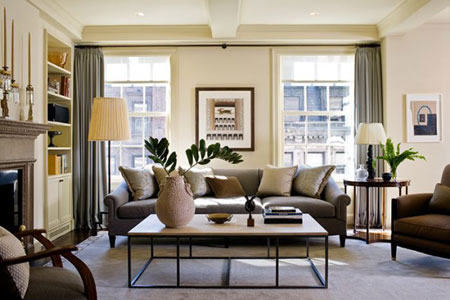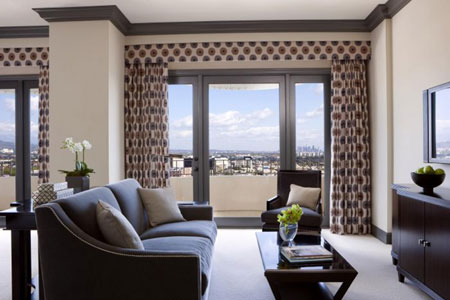Window treatments finish off any room
Ask any decorator and they will tell you that window treatments make a room - but only when chosen correctly.
There are factors to take into consideration when selecting window treatments. Details such as colour and fabric, style, length and custom-made versus ready-made. With so many options to choose from it’s easy to feel overwhelmed.
To make your choice easier let's look at the details more closely:
Fabric choice
The fabric you choose has an impact not only on style, but also on how long your cutains will last. A thin, lightweight fabric will obviously not be as durable as a heavier fabric, while heavier fabrics may not fold and hang the way you want them to. If you are uncertain as to which fabric to choose, ask for sample swatches to take home - or hold it up to the showroom window to get an idea of how the fabric will hang.
Also bear in mind that most fabrics fade over time, and if a room gets a lot of natural sunlight, it's smart to avoid bright colours that tend to fade faster. Neutral colours, on the other hand, are less likely to fade and more likely to blend into a my decor setting.
Silks and silk blends, while fairly pricey, are the best choices to use for window treatments where drape is essential to a room setting. These fabric hang the best. A silk blend works well in a north-facing room that receives plenty of sunlight and this fabric doesn't deteriorate as quickly as real silk. If choosing real silk for window treatments be sure to have them lined, as silk will rot. Plus, a lined curtain has more body and fullness.
In a south-facing room that is cold in the winter months consider heavier and thicker fabrics that help insulate windows. Some fabrics, such as velvet, faux suede and brocade, will assist in warming up a cold room.
Ideal length
Before you take out the tape measure, decide how high above the window you'd like the curtains to begin. If you need to visually heighten a room, keep in mind that hanging panels higher than the window will give a sense of increased height. Interior designers often hang curtains about 15 centimetres above the window frame, but for a dramatic look, some go higher.
katesingerhome.com
To work out how much fabric or provide measurements to have window treatments custom made, measure from the top of the window (plus any added height where the curtains will hang from) to the floor. For a more traditional look, with the curtain slightly puddled on the floor, you'll want to add another 5 to 10 centimetres to your length. For a modern, crisp look, have the panel fall flush with the floor. When measuring the width of your window, be sure to add 10 to 15 centimetres on both sides and double the total number to ensure curtain fullness.
If you skimp on fabric to bring down the cost you will end up with limp drapes that simply hang on either side of the window. If you plan to use the curtains to shut out the sun, the extra fullness around the edges of your window frame will also help block out any creeping light.
Ready-made or custom drapes
Custom window treatments offer many benefits: You can customize the dimensions to your window size and create a tailored look, like a perfectly fitted suit. Custom panels come in endless design options, from material to header style. With these options though, comes a considerable price difference from ready-made curtain panels. If custom curtains just aren't in your budget, spend a little more money on high-quality off-the-shelf window treatments. Not only will these look far better, they will also last considerably longer.
sfadesign.com

